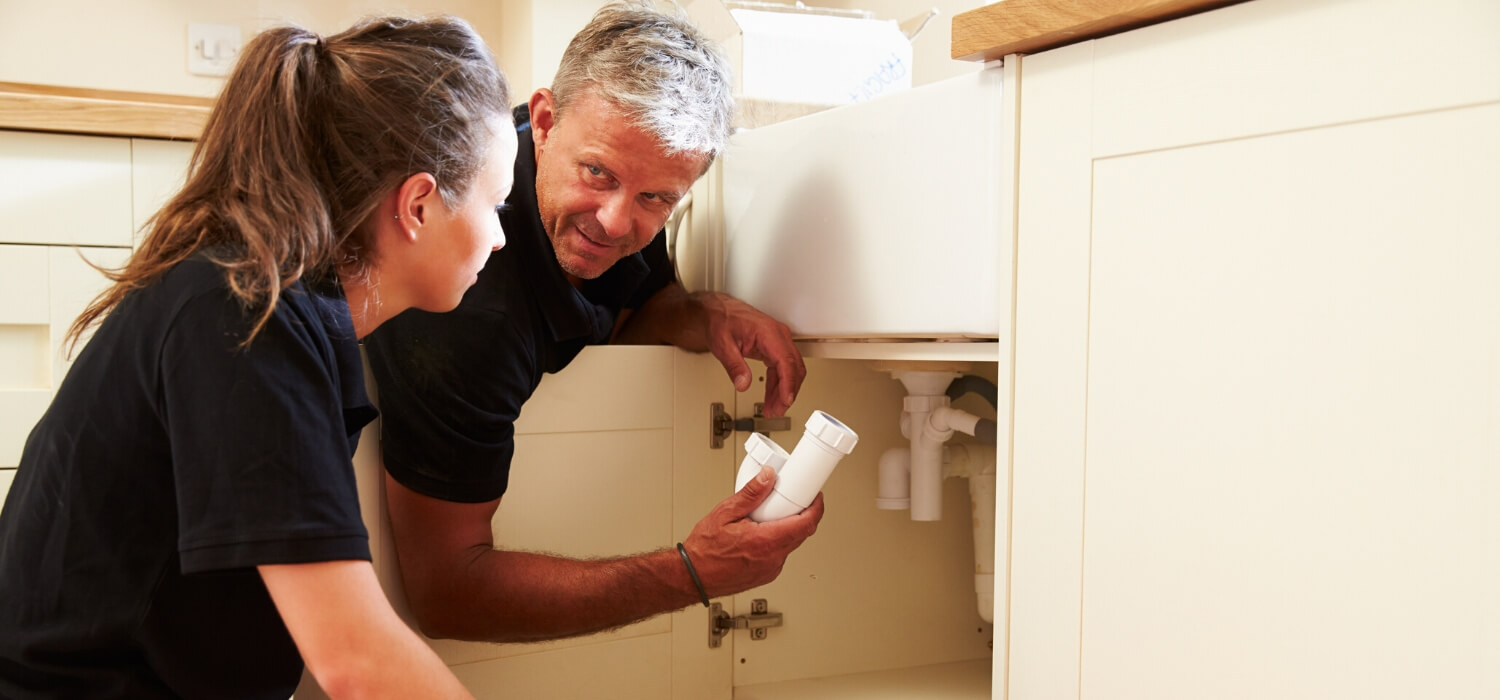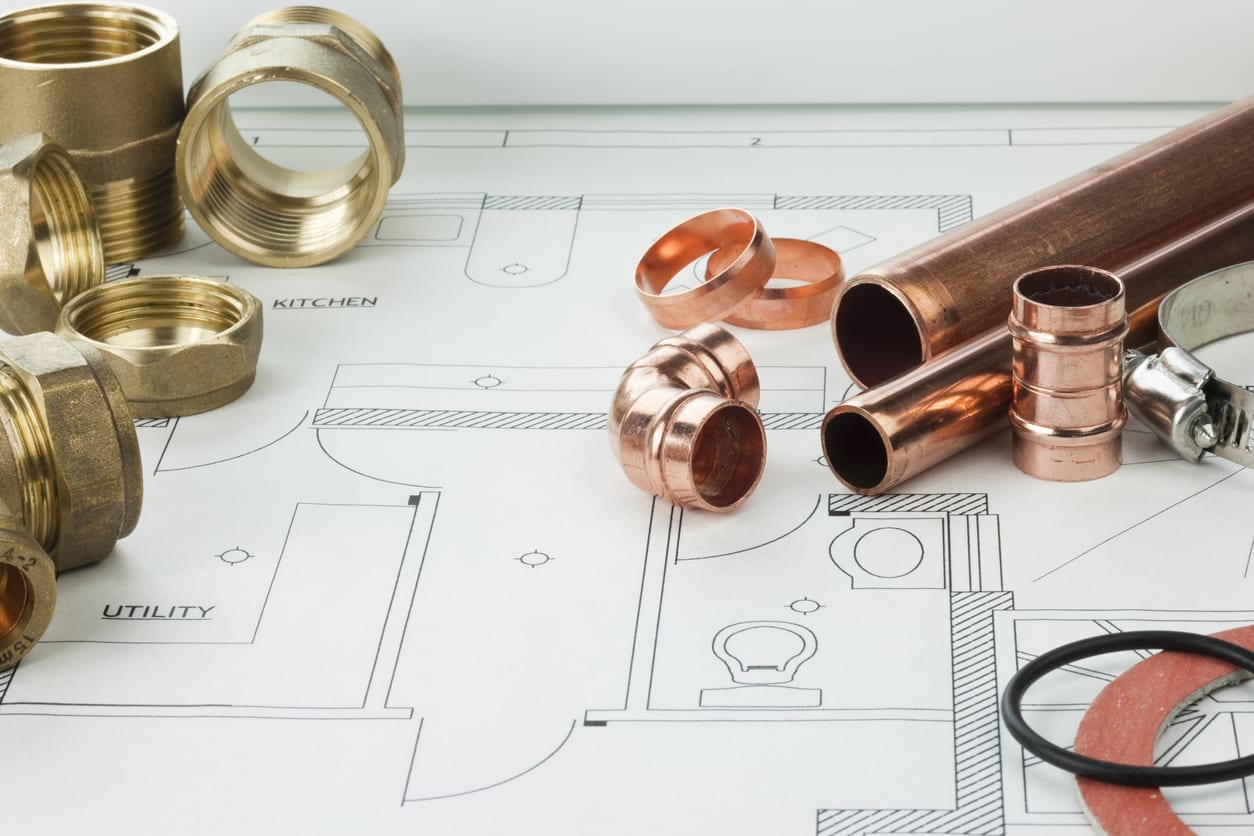What are your thoughts about The Inner Workings of Your Home's Plumbing?

Understanding exactly how your home's pipes system works is crucial for every house owner. From delivering clean water for drinking, food preparation, and bathing to safely eliminating wastewater, a properly maintained pipes system is important for your household's wellness and convenience. In this thorough overview, we'll discover the detailed network that composes your home's pipes and deal ideas on maintenance, upgrades, and dealing with typical problems.
Introduction
Your home's plumbing system is greater than simply a network of pipelines; it's an intricate system that guarantees you have accessibility to tidy water and reliable wastewater elimination. Understanding its elements and how they work together can help you avoid costly repairs and ensure every little thing runs smoothly.
Basic Components of a Plumbing System
Pipelines and Tubes
At the heart of your pipes system are the pipes and tubes that lug water throughout your home. These can be constructed from different materials such as copper, PVC, or PEX, each with its advantages in terms of durability and cost-effectiveness.
Components: Sinks, Toilets, Showers, etc.
Components like sinks, commodes, showers, and tubs are where water is utilized in your home. Understanding exactly how these fixtures attach to the pipes system assists in diagnosing issues and preparing upgrades.
Valves and Shut-off Points
Shutoffs manage the flow of water in your plumbing system. Shut-off shutoffs are critical during emergencies or when you require to make repair work, permitting you to isolate parts of the system without interfering with water flow to the whole residence.
Water System System
Key Water Line
The main water line links your home to the municipal supply of water or an exclusive well. It's where water enters your home and is distributed to different components.
Water Meter and Pressure Regulatory Authority
The water meter procedures your water usage, while a stress regulatory authority makes sure that water streams at a safe pressure throughout your home's plumbing system, preventing damages to pipelines and fixtures.
Cold Water vs. Hot Water Lines
Understanding the distinction in between cold water lines, which provide water directly from the main, and warm water lines, which carry warmed water from the water heater, aids in repairing and preparing for upgrades.
Water drainage System
Drain Water Lines and Traps
Drain pipelines carry wastewater away from sinks, showers, and commodes to the sewage system or sewage-disposal tank. Catches prevent sewage system gases from entering your home and additionally catch particles that can cause obstructions.
Air flow Pipelines
Air flow pipelines permit air into the drain system, protecting against suction that could slow down water drainage and cause traps to vacant. Appropriate air flow is essential for preserving the stability of your plumbing system.
Value of Appropriate Water Drainage
Ensuring proper drain protects against back-ups and water damages. Routinely cleaning up drains pipes and keeping catches can prevent expensive repair services and expand the life of your pipes system.
Water Furnace
Types of Water Heaters
Water heaters can be tankless or standard tank-style. Tankless heating units warm water as needed, while containers save warmed water for immediate usage.
Updating Your Pipes System
Reasons for Upgrading
Updating to water-efficient components or changing old pipelines can improve water quality, minimize water bills, and boost the value of your home.
Modern Plumbing Technologies and Their Advantages
Check out modern technologies like clever leak detectors, water-saving commodes, and energy-efficient water heaters that can conserve cash and decrease environmental influence.
Cost Considerations and ROI
Compute the in advance costs versus lasting cost savings when taking into consideration pipes upgrades. Numerous upgrades spend for themselves through lowered utility bills and less repairs.
Exactly How Water Heaters Connect to the Pipes System
Understanding exactly how water heaters attach to both the cold water supply and hot water circulation lines helps in detecting issues like inadequate warm water or leaks.
Upkeep Tips for Water Heaters
Frequently purging your water heater to eliminate debris, inspecting the temperature setups, and examining for leaks can expand its lifespan and boost power efficiency.
Typical Pipes Issues
Leakages and Their Reasons
Leaks can take place because of aging pipes, loosened fittings, or high water pressure. Resolving leaks promptly stops water damages and mold and mildew growth.
Clogs and Obstructions
Clogs in drains pipes and toilets are usually triggered by flushing non-flushable things or an accumulation of grease and hair. Utilizing drainpipe screens and bearing in mind what goes down your drains pipes can prevent clogs.
Indications of Plumbing Issues to Expect
Low water stress, slow drains, foul odors, or abnormally high water bills are indications of possible plumbing troubles that must be addressed immediately.
Pipes Maintenance Tips
Normal Inspections and Checks
Schedule yearly pipes inspections to capture problems early. Seek signs of leaks, rust, or mineral build-up in taps and showerheads.
DIY Maintenance Tasks
Basic tasks like cleansing faucet aerators, looking for toilet leakages using color tablets, or protecting exposed pipelines in cold environments can protect against major pipes issues.
When to Call an Expert Plumbing
Know when a pipes issue requires expert expertise. Trying intricate repairs without appropriate expertise can lead to even more damages and higher repair work expenses.
Tips for Reducing Water Usage
Basic behaviors like repairing leakages without delay, taking shorter showers, and running complete lots of laundry and meals can save water and reduced your energy bills.
Eco-Friendly Pipes Options
Take into consideration sustainable plumbing products like bamboo for floor covering, which is durable and environmentally friendly, or recycled glass for counter tops.
Emergency Readiness
Actions to Take During a Plumbing Emergency
Know where your shut-off shutoffs are located and just how to turn off the supply of water in case of a ruptured pipeline or significant leak.
Significance of Having Emergency Calls Convenient
Keep contact info for regional plumbing professionals or emergency situation services conveniently offered for fast feedback throughout a plumbing crisis.
Environmental Impact and Conservation
Water-Saving Fixtures and Home Appliances
Setting up low-flow taps, showerheads, and commodes can dramatically reduce water usage without sacrificing performance.
Do It Yourself Emergency Situation Fixes (When Suitable).
Momentary solutions like making use of air duct tape to spot a dripping pipeline or putting a container under a leaking faucet can reduce damage up until a professional plumbing arrives.
Verdict.
Recognizing the composition of your home's plumbing system equips you to maintain it efficiently, saving time and money on fixings. By complying with routine maintenance routines and remaining educated regarding contemporary plumbing technologies, you can ensure your pipes system runs effectively for many years to come.
HOW YOUR PLUMBING SYSTEM WORKS
Which Pipes Do What?
Blue lines = fresh water supply entering the building Red lines = hot water supply entering the building Grey lines = pipes carrying waste away from the building and venting pipes carrying gases away from the building (through the roof) YOUR MAIN PLUMBING SYSTEMS
There are two main plumbing systems that support your home s basic plumbing needs one that brings clean water into your home, and one that sends dirty water away from your home. Connected to the toilet, bath, shower, and other faucets in your home, these two systems keep your water flowing in the right directions.
ACCESSING FRESH WATER
Fresh and clean water is brought into your home through the main water supply line . Filtered through one pipe, this water is pressured to flow into the various fixtures in your home at any given time.
This water can be sourced from a well located on your property, a pond or river (mostly cottages), or, as in most cases, from the city s municipal water treatment centre. However, it is important to note that water that is untreated, such as the water siphoned from ponds or rivers, may not be safe to drink. Personal water supplies always need to be treated for hardness and contaminants before consumed.
MUNICIPAL WATER SUPPLIES
Improve taste and odour Remove sediment Eliminate hardness Reduce chlorine COLD WATER SUPPLY VS. HOT WATER SUPPLY
Cold water flows into your home or building through the service line, which then distributes hot or cold water to your fixtures. This line is most commonly run through a central column that runs floor to floor. Hot water runs in short and straight pipes as the longer the pipeline, the more heat that will be lost in the transfer. Having shorter pipes also allows residents to access hot water more quickly.
WASTE WATER SYSTEM
Your wastewater system is divided into two parts pipes that send wastewater away from your home and venting pipes that send sewer gas away from your home. Sewage water travels through pipes that flush the water and waste towards local sewers that are operated and managed by your city or town. Most sewer systems rely on gravity to move the wastewater to where it needs to go.
The further away from your toilet or sink, the larger wastewater pipes become. This allows for waste to be disposed of from various parts of your home or business at once without pipe blockages. The angle and flow of these pipes are also essential for keeping your waste pipes clear of build up.
https://harrisplumbing.ca/how-your-home-plumbing-system-works/

We were shown that article on Exploring Your Homes Plumbing Anatomy from an associate on our other site. Sharing is caring. You just don't know, you may very well be doing someone a favor. Thanks for your time invested reading it.
Visit Our Site